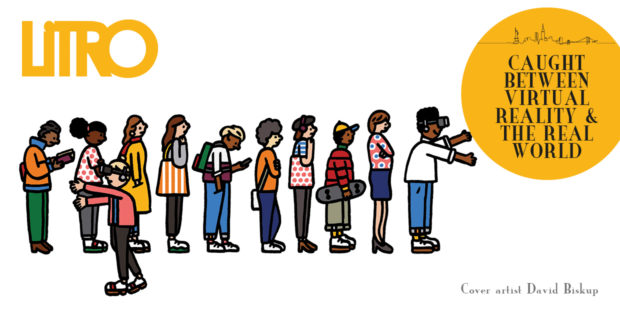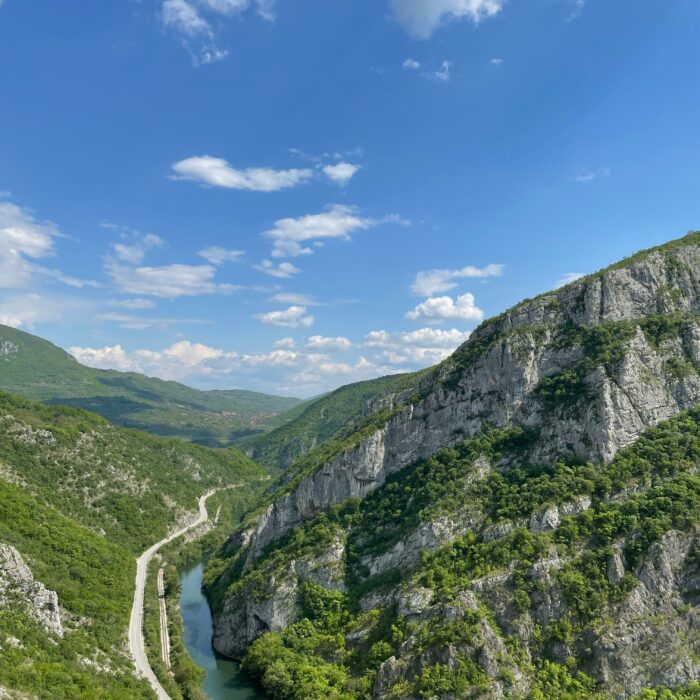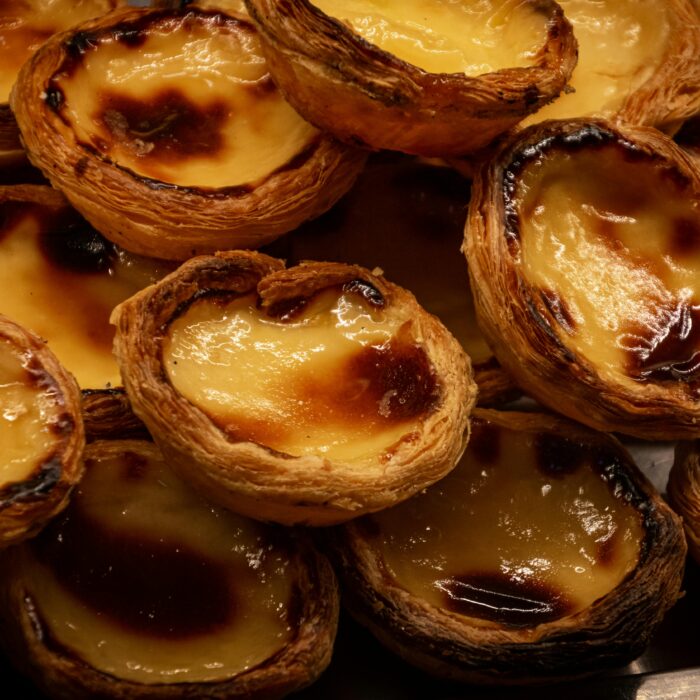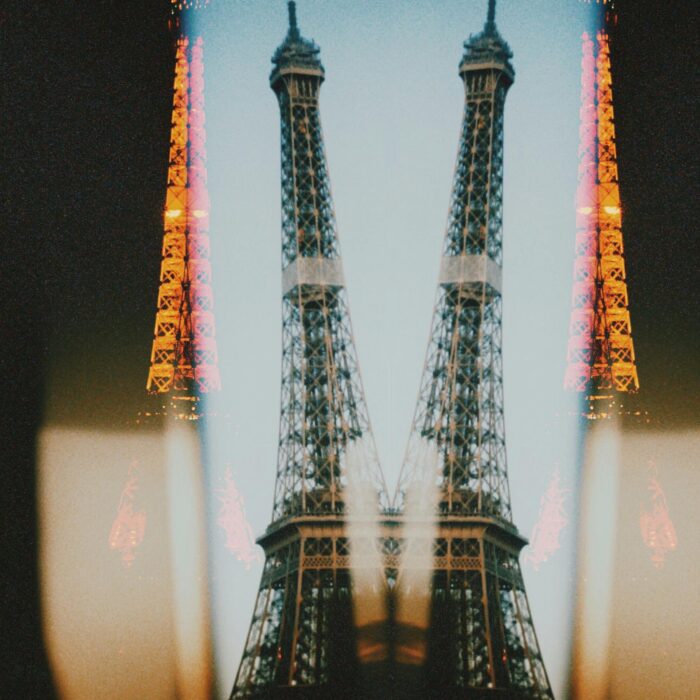You have no items in your cart. Want to get some nice things?
Go shopping
From the first stone tools to the industrial revolution to now the digital revolution, technology has changed everything and come to dominate our lives. We are never, it seems, or hardly ever, without a device of one kind or another in our hand, never not plugged in, online, connected; you might well be reading these words on a little screen on your palm, instead of in our beautifully designed print edition (your loss). Few of us would want to be without, would want history to be without, the wheel, the internal combustion engine (even if we have to scrap them asap for green, electric transportation), antibiotics, the microchip, MRI scanners, etc.; who now would be without our phones, tablets, broadband and Wi-Fi and Wikipedia and the cloud?
But our data’s stolen and sold, foreign powers interfere in our elections, the positive online activism oftentimes seems outweighed by the hate, and above all there’s the climate crisis. Irreversible global warming, carbon emissions coming out of all our beloved tech, directly or indirectly, is the greatest threat, entirely brought upon itself, that humanity will ever face … and our responses so far have been wholly inadequate. We are in the sixth mass extinction of species. But maybe technology can be part of the cure: time for a green revolution.
But before civilisation collapses and the robots take over and there’s an AI writing this instead of a flesh and blood editor, Litro US this issue is, on the whole, a bit more positive about technology and its potentialities.
Writers and artists have always engaged with technology both in terms of making and of distributing their work, as well as dreaming about the future. From Cindy Sherman’s often nightmarish manipulations of her own image on Instagram, to Leonardo da Vinci’s draughtsman dreams about flying machines (2019’s commemoration of the five hundred years since Leonardo da Vinci’s death spanned from Milan to London to Paris and globally). The new technologies offer a vast array of possibilities for storytellers, from augmented and virtual reality through to technologically mediated theatre, reading experiences and beyond.
For many artists and writers the pace of technological change is daunting, even overwhelming, and this can form a barrier to innovation, but creatives continue to find remarkable and illuminating ways to engage with new technology, and that’s what this issue of Litro is here to celebrate through short stories, essays, poetry and the visual arts.
Art across the globe is being influenced more and more by technology; or is it that we are now catching up with those artists who have used technology in their work for many years. In my travels last year, in the US in September, I caught Laurie Anderson’s collaboration with Hsin-Chien Huang that invites viewers to explore a multifunctional constellation of galleries and installations including a working studio, audio archive, exhibition venue, and a virtual reality environment for experiences. In China, later in the year, following a dazed and confused experience of the immersive theatrical performance of “Sleep No More” by the UK production company Apples & Snakes, I stumbled across island 6, an art collective of self-confessed tech-geeks and creative talents. The collective produces cutting-edge art that constantly contemplates the future of Asia, engages sights and scenes from old and new China and elevates the skills of new talents by working from a communal forum, the artistic collective Liu Dao, whose artists’ works are visual, interactive, conceptual, humorous, and always striking, involving fresh takes on modern technology. The spirit and purpose behind all Liu Dao artworks, literary contributions and exhibitions is collaboration. The group places emphasis on interaction in order to engage artists, curators and technicians in the process of creating and experiencing art. The digital artworks also use postproduction editors, such as After Effects experts or sound designers. Each artwork and exhibition has a cast and credits, like film credits. Major collections that have Liu Dao artwork include Louis Vuitton House, the Antoine Arnault Collection in Paris, the White Rabbit Collection in Sydney, the Katz Collection in NYC, and the Patrizio Bertelli Collection (Prada).
In New York in early December I visited the much-anticipated reopening of MoMA after its $450 million renovation. The Museum on West 53rd Street is bigger; they’ve added about 50,000 square feet. Throughout the new space, one gets the sense of the museum embracing the way people in this new decade, will consume a wide variety of images in a digital world – this kind of lateral projection of imagery. You tap here, you get this, you connect this. There’s a kind of seamlessness to the way both images in the virtual world and images in the physical world are absorbed. In one room were the miniature worlds of Sou Fujimoto’s Architecture Is Everywhere – Fujimoto here uses unexpected materials to construct miniature architectural models – in another was the next visual sensation, Janet Cardiff and George Bures Miller’s The Killing Machine. In an automated ballet of robotics, props, light, and sound, The Killing Machine operates on an unseen, imagined victim. You activate it by pushing a red button. Alluding to Kafka’s 1919 story “In the Penal Colony”, about an elaborate execution apparatus, The Killing Machine ironically contrasts its sinister activity with the rudimentary mechanics of a music box and playful embellishments like faux fur and a disco ball. Part of the artists’ continued exploration of theatrical tropes and immersive environments, this work brings to life a haunting spectacle that, in its futility, doubles as a critique of the sanctioned use of torture.
To the next room, where visitors are invited to sit on judo mats to view a thirty-minute video experience – Hito Steyerl’s Liquidity Inc., a multi-layered portrait of Jacob Wood, a financial analyst who lost his job in the economic crash of 2008 and became a career mixed-martial-arts fighter. Wood’s story unfolds through real and virtual worlds that are made to overlap, combining conventions of documentary film with internet-syntax hashtags, gifs, and memes. With its computer-generated waves and news footage of hurricanes and tsunamis, the work uses water and extreme weather as metaphors for the fluidity of financial assets and digital information, and for a collective sense of instability.
It’s interesting to note, with Brexit now inevitable, Kings Place will open its season and the new decade with Laurie Anderson. If you are in London in April, she will be performing Nature Unwrapped throughout 2020.
Technology can enrich our lives and our art practices if we take the challenges seriously and think hard about the ethics and consequences of technological innovation while at the same time remaining open to innovation and, above all, creative play.
I will always be a techno optimist. There is no need to look to the future for advances in technology; like a William Gibson novel, we need but look at the present – and smell the roses! 2020 ushers in the dawn of 5G and the true definition of the internet of things. 5G will enable driverless automobiles; a boxset of your favourite show need not be downloaded the night before your flight but in a matter of seconds whilst you queue to check in your luggage. 5G will see the internet truly connected to the motherboard – so who knows, the next edition of Litro may just be edited not by a living, breathing, bleeding human but an AI!




